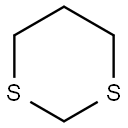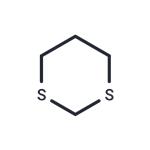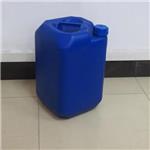white to pale beige crystals, needles or powder
1,3-Dithiane is used in umpolung reactions such as the Corey-Seebach reaction. It acts as a reagent for the deoxygenation of sulfoxides to their corresponding sulfides. Further, it is used as a protecting group for carbonyl compounds used in organic synthesis. It serves as a useful labeled synthon. In addition to this, it is used in the preparation of 2-ethyl-[1,3]dithiane.
ChEBI: 1,3-dithiane is a dithiane.
1,3-dithiane has 2 weakly acidic protons that can be removed and alkylation of the carbon is possible. Once alkylated, the 1,3-dithiane becomes a “protected” carbonyl as it can be hydrolyzed to the corresponding carbonyl structure. Alternatively, the 1,3-dithiane moiety may also be introduced by thioacetalisation of a carbonyl group, either using acid or Lewis acid catalysis, 12 or of a 1,1-dihalide (using transition metal catalysis).
1,3-Dithiane, a protected formaldehyde anion equivalent, serves as useful labeled synthon.
Crystallise the 1,3-dithiane from 1.5 times its weight of MeOH at 0o, and sublime it at 40-50o/0.1mm. [Groel & Seebach Synthesis 357 1977, Beilstein 19/1 V 13.]



